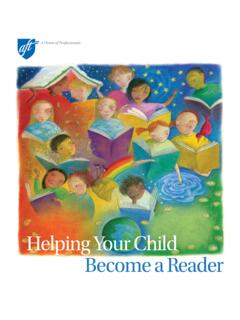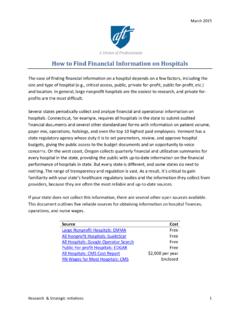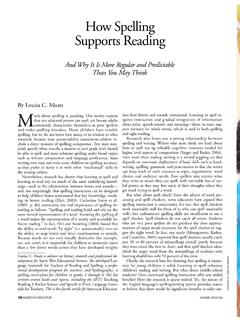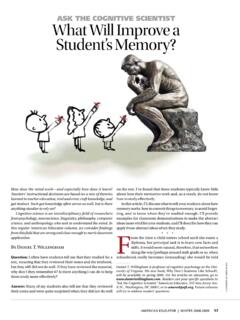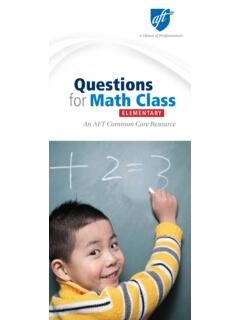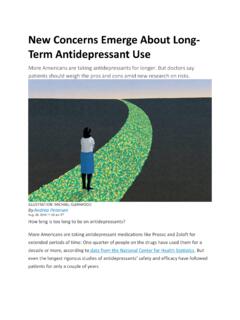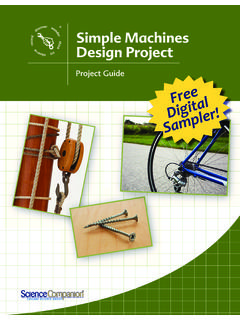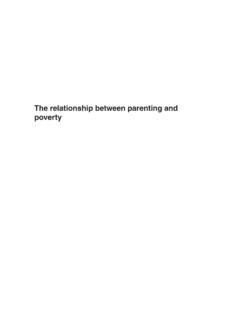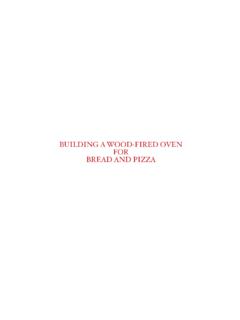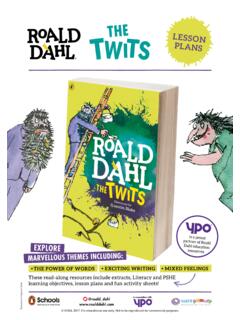Transcription of Transitioning to Kindergarten: School Readiness
1 School Readiness Introduction ..page 1 Creating an "Early Learning Passport" ..page 2 kindergarten Readiness Indicators Checklist expressive and receptive language ..page 3 approaches to learning and cognition ..page 3 phonological awareness and print knowledge ..page 4 mathematics ..page 5 social / emotional ..page 5 physical development ..page 6 kindergarten Readiness Indicators: Observation & Activity Guide introduction ..page 7 observations and notes form ..page 8 expressive and receptive language ..page 9 approaches to learning and cognition ..page 11 phonological awareness and print knowledge ..page 16 mathematics ..page 21 social and emotional ..page 25 physical development ..page 28 Drawing and Writing Sample Template ..page 30 Copyright 2006 National Center for Learning Disabilities, Inc. All rights WeingartenpresidentLorretta Johnsonsecretary-treasurerFrancine Lawrenceexecutive vice presidentThe National Center for Learning Disabilities (NCLD) improves the lives of all people with learning difficulties and disabilities by empowering parents, enabling young adults, transforming schools, and creating policy and advocacy MISSIONThe American Federation of Teachers is a union of professionals that champions fairness; democracy; economic opportunity; and high-quality public education, healthcare and public services for our students, their families and our communities.
2 We are committed to advancing these principles through community engagement, organizing, collective bargaining and political activism, and especially through the work our members Readiness / 1 School ReadinessHow do you know if a child is ready for kindergarten ? The time that you spend with a child every day can give you lots of information about how he or she is progressing. Many states and School districts have developed kindergarten Readiness checklists for their educators to kindergarten Readiness indicators checklist in this section is an example of what some states are using. It has been developed to help you ensure that the educational experience of the children in your care gets off to a good is what you will find in this section. You can use all of the resources listed here, or just choose what will be most useful for Creating an Early Learning Passport Use this helpful guide to create an Early Learning Passport for each kindergarten Readiness Indicators ChecklistThis is a short checklist that helps you keep track of skills that children have mastered as they move through the pre- kindergarten year.
3 You can use one checklist for each child, and check off skills in the fall, winter and late spring. Some children will not possess all of the skills included here, but that will not prevent them from entering School . This is simply a list of skills that will give you, as an early educator, a place to begin in preparing children for entering kindergarten Readiness Indicators: Observation and Activity GuideThis is an in-depth guide to the kindergarten Readiness indicators. It helps you know what to look for when you observe a child and gives you a place to write down your observations. The guide also includes some ideas for skill-building activities for each skill that can be done with a child who needs some Drawing and Writing Sample TemplateUse the template at the end of this section several times during the year to collect writing and drawing samples from each / Transitioning TO KINDERGARTENS chool ReadinessCreating An Early Learning PassportMany early childhood educators have found it helpful to use the resources in this toolkit to create an Early Learning Passport for each child.
4 The Early Learning Passport is a folder that you create containing checklists, documents and work samples that can be passed on to the child s kindergarten teacher. There is no right way to put an Early Learning Passport together. The important thing is that information about a child s skills and development is passed on to the kindergarten teacher in a useful and organized create an Early Learning Passport:Make a folder for each child. You can have each child decorate the front of his or her folder. Make sure that the folder clearly states the child s name and date of the following resources from this toolkit:From the School Readiness section kindergarten Readiness Indicators Checklist, or whatever Readiness checklist your program uses. Include information from three times during the School year to show which skills the child has mastered as he or she moved through the pre- kindergarten year.
5 Drawing and Writing Sample Templates from three or four times during the School the Get Ready to Read! section What I Learned About This Child From the Get Ready to Read! Screening ToolFrom the For Parents section Getting to Know My Child: A Guide for My Child s kindergarten Teacher. You can give this resource to each parent and ask them to fill it out and return it to you. You can also fill it out with each parent during a one-to-one meetingSCHOOL Readiness / 3 School ReadinessKindergarten Readiness Indicators ChecklistChild s Name _____ Date of Birth __/__/___Expressive and Receptive LanguageFALLWINTERSPRINGS peaks in complete sentences most of the time Understands and follows directions with at least two steps Understands vocabulary related to position, direction, size and comparison:like / different top / bottom first / last big / little up / down Makes simple predictions and comments about a story about a story being read Approaches to Learning and CognitionFALLWINTERSPRINGM atches two like pictures in a set of five pictures Classifies (same/different, alike/not alike) objects by physical features.
6 Shape Color Size Organizes objects that go together in groups Recognizes, copies or repeats patterning sequence Demonstrates the ability to correctly put in order or sequence up to three story pictures Approaches to Learning and Cognition (continued)FALLWINTERSPRINGP articipates in repeating a familiar song, poem, finger play and/or nursery rhyme Retells a simple story after listening to a story with pictures Does simple puzzles (up to four 4 pieces) Identifies or points to five (5) colors Phonological Awareness and Print Knowledge FALLWINTERSPRINGR ecognizes own name in print Points to and/or recognizes letters in own name Attempts to write letters in own name Recognizes familiar signs, words and logos in the child s environment Demonstrates book awareness:Cover and back of book Left to right order Words are read top to bottom Book handling:Holding book right side up Beginning / Ending Identifies two words that rhyme/sound the same when given rhyming picture words Matches three letters with the sounds they make Uses symbols or drawings to express ideas 4 / Transitioning TO KINDERGARTENS chool ReadinessKindergarten Readiness Indicators ChecklistMathematicsFALLWINTERSPRINGC ounts number of objects in small group (up to five objects) Matches a numeral (0-5) to a group with that number of objects Demonstrates an understanding of adding to and taking away using objects up to five Arranges numerals in order 1-5 Identifies/points to three shapes.
7 Circle Square Triangle Counts in sequence 1-10 Understands concepts of more and less up to five objects Social / EmotionalFALLWINTERSPRINGI dentifies self as a boy or girl Knows first and last name Knows parent s first and last name Identifies age Makes needs known Interacts with other children Demonstrates independence in personal care (washing hands, dressing, bathroom use) Separates from parents by appearing comfortable and secure without parent School Readiness / 5 School ReadinessKindergarten Readiness Indicators ChecklistPhysical Development FALLWINTERSPRINGUses writing and drawing tools and child-sized scissors with control and intention Copies figures such as: _____ (straight line) O (circle) X + Demonstrates gross motor skills:Hops Jumps Runs Catches and bounces ball These kindergarten Readiness Indicators have been adapted by the National Center for Learning Disabilities, Inc, with permission from the Arkansas Department of Human Resources, Division of Child Care and Early Childhood / Transitioning TO KINDERGARTENS chool ReadinessKindergarten Readiness Indicators ChecklistSCHOOL Readiness / 7 School ReadinessKindergarten Readiness Indicators observation & activity guideThis guide can help you know what to look for when you observe a child, and give you some ideas of skill-building activities to do with a child who needs some this guide, each page has three columns:Column 1 Column 1 lists the kindergarten Readiness Indicators.
8 Each indicator is followed by a few examples of what to look for when you observe a 2 Column 2 is where you should note your own observations of a child with specific examples of what you observed, or concerns that you may 3 Column 3 lists a few activities for each indicator that you can do with the children to help strengthen particular information that you write in this guide can be very helpful to you, the child s parents, and the child s new kindergarten teacher. It is set up to be one tool that you can use to monitor a child s progress and have something to pass on to parents and kindergarten teacher. If you pass it along, either as part of an Early Learning Passport or at a meeting that you have with the kindergarten teacher, it will give the new teacher some valuable information about the child s strengths and This guide is not a test!
9 No child is expected to have mastered all of these skills before entering kindergarten . This is a guide to help you see all of the things that a 4-year-old can do, and to become an active partner in assuring success in School for every s Name _____ Date of Birth __/__/___Kindergarten Readiness Indicators Observation & Activity GuideName of current School or early childhood setting _____Past schools or early childhood settings _____ _____ September ObservationDate: _____Child's age: _____Person Observing: _____ January ObservationDate: _____Child's age: _____Person Observing: _____ April ObservationDate: _____Child's age: _____Person Observing: _____Observations and Notes:8 / Transitioning TO KINDERGARTENS chool ReadinessKindergarten Readiness Indicators observation & activity guideExpressive and Receptive LanguageKindergarten Readiness IndicatorOBSERVATION & EXAMPLESA ctivity Ideas Speaks in complete sentences Tells you what he or she did during a visit to a friend.
10 Talks about some things that happened at home or at his or her preschool center. Talks about a family event. 1 Ask children about the different parts of their day, using questions that require more than a yes or no : What did you play with at your friend s house yesterday? Tell me about the playground at School today! Follows directions with at least two steps Follows your directions, such as Pick up the book and put it on the table." Tells you, in order, the things he/she does to get ready for bed. Tells you, in order, what he/she does at preschool ( We played in centers, had snacks, went to the playground, ate lunch and took a nap. ). Follows directions in a simple game that the group plays together. 2As you go through the day, give children directions that involve at least two : Take out the play-dough and put it on the table. Take off your jacket and hang it on the hook.
